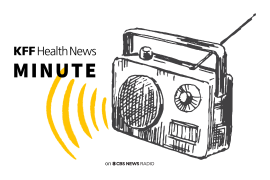Research Roundup: Medicaid Block Grants; Job Loss And The ACA; Growing HIV Coverage
Each week, KHN compiles a selection of recently released health policy studies and briefs.
Urban Institute:
What TANF Can Teach Us About Block Granting Social Services
White House officials and congressional leaders have talked about seizing the opportunity to pass sweeping changes to federal antipoverty programs. One potential change is to give block grants of federal funds to states and allow states greater flexibility .... House Speaker Paul Ryan has long contended that expanding the block grant model to other facets of the safety net — such as Medicaid and food stamps — would afford states the flexibility to drive innovation in combating poverty. But examining the results of welfare reform after two decades presents a more cautionary tale .... Simply put, all states ended up with far fewer funds and a diminished ability to meet their residents’ needs. (Hahn and Coffey, 2/7)
The Kaiser Family Foundation:
Current Flexibility In Medicaid: An Overview Of Federal Standards And State Options
This brief provides an overview of current federal standards and state options in Medicaid to help inform upcoming debates about increasing state flexibility in the program as part of efforts to restructure Medicaid financing. Today, states operate their Medicaid programs within federal standards and a wide range of state options in exchange for federal matching funds that are provided with no limit. Each state Medicaid program is unique, reflecting states’ use of existing flexibility and waiver authority to design their programs to meet their specific needs and priorities. As proposals to restructure Medicaid financing develop, it will be important to examine what additional flexibilities they would provide to states and what standards, accountability and enrollee protections would remain for states to access federal funds. (Artiga et al., 1/31)
Urban Institute/Robert Wood Johnson Foundation:
Recent Evidence On The ACA And Employment: Has The ACA Been A Job Killer? 2016 Update
We find no evidence to support claims that the ACA has been a job killer. Through 2016, the ACA had little to no adverse effect on employment and usual hours worked per week. For both measures, levels in 2014, 2015, and 2016 are statistically identical to our projections based on patterns existing before 2014, the year the major provisions of the ACA went into effect. Our conclusion applies to the full sample of nonelderly persons and to subgroups of nonelderly persons based on gender and educational attainment. Levels of part-time work (29 or fewer hours per week) have fallen since 2014, but remain at somewhat higher levels than would be expected given recent declines in the unemployment rate and overall economic improvement. (Garrett, Kaestner and Gangopadhyaya, 2/16)
The Kaiser Family Foundation:
Insurance Coverage Changes For People With HIV Under The ACA
This brief provides the first national estimates of changes in insurance coverage among people with HIV since the implementation of the ACA. It is based on analysis of data from the Centers for Disease Control and Prevention (CDC). We find that coverage increased significantly for people with HIV due to the ACA’s Medicaid expansion; indeed, increased Medicaid coverage in expansion states drove a nationwide increase in coverage for people with HIV. In addition, the share relying on the Ryan White HIV/AIDS Program also increased. (Kates and Dawson, 2/14)
Brookings/USC Schaeffer Center for Health Policy & Economics:
Re-Balancing Medical And Social Spending To Promote Health: Increasing State Flexibility To Improve Health Through Housing
The health impacts of interventions that improve economic conditions such as household income are still the subject of considerable debate. Some economists find little support to show that public transfer payments improve health outcomes, while others argue that federal assistance frees family income to spend on better access to health care, and thereby improves population health. Some researchers have identified evidence that stressful work environments and educational disparities are social mechanisms with a deleterious impact on health, but the evidence that increased public spending targeting these mechanisms will improve health outcomes is nascent. In contrast, the research showing that expenditures that improve access to safe, affordable housing improve population health is relatively strong. (Butler, Matthew and Cabello, 2/15)
Here is a selection of news coverage of other recent research:
MedPage Today:
Study: Beware The Snippy, Snarky Surgeon?
The more complaints lodged at surgeons, the more likely it was for their patients to suffer complications after going under the knife, a study found, helping explain why operators with the least favorable reviews get sued the most.
Surgeons who had a history of unsolicited patient reviews -- often regarding rudeness and intimidation directed at patients and other healthcare professionals alike -- were tied to greater risks of: Complications for patients .... Surgical complications .... Patient readmissions. (Lou, 2/15)
MedPage Today:
U.S. Cancer Deaths Down Overall, Up In Some Regions: Clin Onc News Report
A recent study in JAMA found that, between 1980 and 2014, cancer deaths in the U.S. declined overall by about 20%, but did spike in specific counties.
The therapeutic benefits of immunotherapy are clear, but financial and toxicity costs must also be considered. (2/15)
Reuters:
Salt Reduction Policies Cost-Effective Even Without Healthcare Savings
Government policies designed to reduce how much salt people eat may be cost-effective even without considering the potential healthcare savings, a recent study suggests. That’s because efforts to curb salt use through policies like public education and industry agreements would not cost that much relative to their potential to reduce mortality and disability, researchers estimate. (Rapaport, 2/10)






